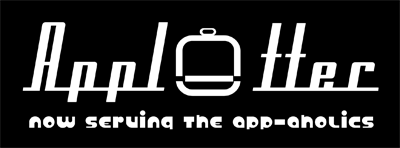The Goddess Tarot: Mystic Foresights
Before divination and occult practices tainted our thoughts with the supposedly supernatural powers that a tarot deck holds, the Italians and the French merely used it for merry-making and as a pastime. During the 15th century, tarot cards held no magical meaning to humanity that can be compared to our indifference to the plain ‘ol playing cards of today. But come the 18th up until the 19th centuries, the word “tarot” adopted an entirely different connotation. Antoine Court de Gébelin, a Swiss Protestant, incorporated the Tarot deck as an esoteric depository of mystic and magical knowledge. In his published work, Le Monde Primitiff, he altercated the possible connection of the tarot deck to the mythology of Isis and Thoth. Gébelin went as far as to devise a hollow etymology of “tarot” saying that it came from the Egyptian word “tar” meaning “royal” and “ro” for “road” ergo, “royal road for wisdom”. Since the Egyptian hieroglyphics weren’t deciphered then, no one counterattacked Gébelin’s manifesto.
From then on, the tarot deck became the talisman of many clandestine societies, occultists, mystics, and fortune tellers. The illustrative cards with various Greek gods and goddesses were believed to have hidden bearings capable of foretelling an individual’s fate or to assay their sensibility. Many a century after, the assortment of tarot deck motifs have been made from the astronomical, heraldic, to the philosophical. Among the assortment of decks, one of the renowned theme is called The Goddess Tarot which was made available for smartphones during the first quarter of 2011.
Continue reading as we plummet through the uncharted territory of metaphysical dynamism in this iOS and Android app review.
Brought to us through the brainwork and illustration of Kris Waldherr, The Goddess Tarot started out as a tangible deck of cards and a paperback workbook. Commonly, there are 78 unique and significant docket within a deck. Each is representative of a diverse supermundane wordly elements. Tarot interpreters or readers—whichever you may want to call them—are not to be confused for a witch, a magician, or a psychic. Back in the middle ages, tarot readers may possibly be plenty due to its increase in popularity but through generations and generations of metamorphosis, the iconographic deck was pushed to the dark road of spirit quests and seances. The use of the tarot cards are relative to the intended purpose. As everything has two opposite and equal sides, the deck receives no exception. However, discussing its morose side is not my intention. It’s a common fact that tarot cards can be used as mediums to foresee what is in our tomorrows.
There are many ways to predict the future they say, starting from the mild deja vu instances to analyzing through a person’s aura, this phenomenons makes our tomorrows not as surprising any longer. But like a fortune cookie, waiting to be cracked open, the tech-savvies can now have a daily dose of their tarot reading by giving their full trust on the app called The Goddess Tarot developed by none other than Kris Waldherr Art and Words.
The Goddesses Have Spoken
The common tarot deck depicts an 80% masculinity. However, in Waldherr’s Goddess Tarot version, the 22 Major Arcana (principal cards with human illustrations) are depicted by goddesses all over the world. It did not center on Greek mythology alone because famous goddesses from India, Wales, and many other nations are featured in the deck to “create a tarot deck that would speak directly to women using our stories, while incorporating the archetypal power and symbols of the tarot“, that’s according to Waldherr herself.
The Goddess Tarot works very simply and it has incredible features to boot. Starting with the four types of “foretells” users can avail of the application, reading through your supposed destiny within the next few hours or days is not the only thing you can do with it. It allows note-taking and e-mail sending as well so you can either have a personal account of your readings or have them sent through your friends just because.
Eminent Features
As what I’ve mentioned, users can choose from four different types of readings namely, One Card Oracle, Past-Present-Future, Celtic Cross, and the Goddess Circle. The number of cards per each category differs and the interpretation that comes along with it may be varied as well.
- One Card Oracle – users will have to choose a card from the deck that can be shuffled by tapping it once on your device’s screen. The moment you’ve tapped the continuously shuffling cards, you’re pick will be shown alongside its interpretation. (The following categories requires the same action but then again, the number of cards aren’t the same.)
- Past-Present-Future – Four cards
- Goddesses Circle – Eight cards
- Celtic Cross – Ten cards.
The One Card Oracle is what I refer to mostly. Upon clicking the option, you will be asked to clear your mind and focus on the question deep within your heart. If you’re ready, shuffle the cards, pick one, and read the “answer”. There’s no beating around the bush with the results but of course, the interpretations won’t be for everyone. For crying out loud, this is a pre-modified mobile application, so don’t go around saying that it’s unreal because right from the get-go you should have accepted that fact already.
Although the app is a bit moot on the “predictions” bit, it’s not hard to make oneself believe that maybe it is fate’s work that a specific reading showed up on your phone. Whatever it is, the app’s words can be used as inspiration and not as a basis for truth.
Aside from the foresights, there is the Tarot Journal wherein users can make notes after reading an interpretation. The app allows the usage of a screen cap to paste on the journal to act as a reminder to the user on the specific reading. Write as many notes as you can as there are no limitation for it.
If you are wondering about the cards, you can browse through all of them via the app’s reference center. It includes everything, Major and Minor Arcanas alike.
Harrie Would Like A Peek
To get the fantastic retina display of the app, the creators scanned the original deck made by Waldherr so as to make sure that each and every virtual card is identical to that of the tangible one. Tarot cards interpretations differ depending on its position, whether upright or upside down. The Goddess Tarot allows its users to choose the position of their card to make the experience more believable, at the least.
As I can be skeptic at times, making myself believe that these “windows” to our future proved a genuine truth is not hard as I thought it would be. With my belief that the hands of fate are forever in control, there is no saying that tarot readings are a hundred percent unreal. There have been numerous cases wherein individuals are adhering to the precision of the readings they’ve received through a tarot deck—but nobody can entirely attest that it might be a lucky guess from the interpreter or coincidence on the message receiver.
Nonetheless, I enjoy reading through The Goddess Tarot because it gives me a sense of strong bond with my myth-loving fangirl self through the commendable illustrations of the goddesses. Plus, it won’t do damage to treat the predictions as a motivation to last the day.
The Goddess Tarot is available for iOS and Android devices with different versions to choose from.
For Android:
For iOS:
Harrie Sade
Latest posts by Harrie Sade (see all)
- Radioactive Lie Detector: Swear to tell the truth - January 18, 2013
- Have you ever seen a falling and jumping Happy Poo? - January 17, 2013
- App Review: TimeAct Task Manager - January 14, 2013
- Animals: Bounce your way up! - January 11, 2013
- Bedtime Apps: Top 5 Interactive Children Story Books for Android - January 10, 2013



Leave a Reply